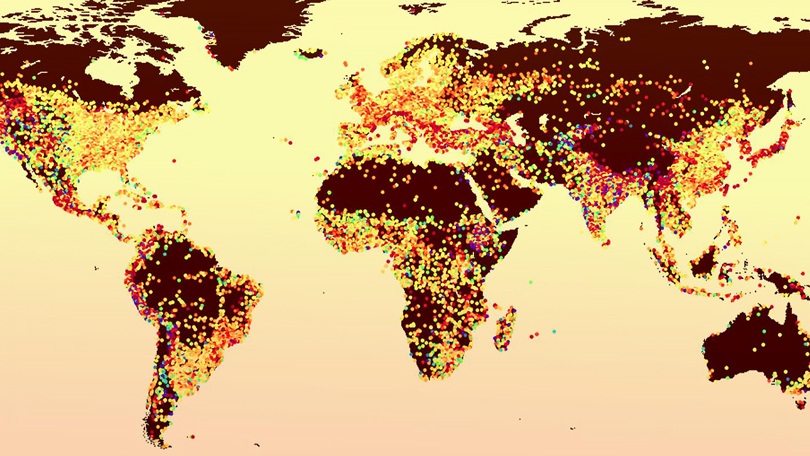 Around the world, cities are often a few degrees hotter than surrounding rural areas. A recent study verified that across the world, the intensity of this so-called urban heat island effect depends on a city’s population and how much rainfall it receives annually.
Around the world, cities are often a few degrees hotter than surrounding rural areas. A recent study verified that across the world, the intensity of this so-called urban heat island effect depends on a city’s population and how much rainfall it receives annually.
One key factor, according to lead researcher Gabriele Manoli, is how much water is exchanged with the atmosphere by a city compared with the surrounding land. “Evapotranspiration…is the process of transferring water from the soil into the atmosphere, regulated by vegetation,” Manoli, an environmental engineer at University College London, told Eos. “This process has a cooling effect on the Earth’s surface.”
Adding green space to a city is a common strategy to mitigate urban heat. If a city has more greenery than the surrounding area, the urban heat island (UHI) intensity will be relatively mild, Manoli’s team found. But the study suggests that if a city sits in a lush and verdant region, “vegetation still helps, but you need many more trees to get the same effect,” he said.
Cool and Dry, Warm and Wet
Regionally, “it was known that there are two general trends: The intensity of urban heat islands increases with population and…with increasing precipitation in the region,” Manoli explained. “Population is a proxy for the size of a city, its form, activities, and infrastructures, while precipitation is a proxy for the local climate and vegetation characteristics.”
The researchers sought to verify and explain these trends on a global scale, so they gathered summertime surface temperature data from more than 30,000 cities around the world. They compared the average temperature inside a city to that of the surrounding undeveloped area—the UHI intensity—and compared that to a city’s population and amount of precipitation.

The team found that the population trend held up on a global scale. “The bigger a city is, the warmer a city is,” Manoli said. UHI intensity also increased with precipitation but began leveling off when a city reached about 1,000 millimeters per year of precipitation.
Why? As a city grows, it replaces the vegetation in undeveloped areas with urban surfaces and some amount of greenery. This alteration changes how that parcel of land exchanges water with the air and how that air flows.
“If a city is surrounded by a desert,” he said, “then the city can be cooler than its surroundings because it can have green spaces that transpire water, it can exchange heat more efficiently than the barren land, and so on.”
However, “tropical forests transpire and cool down the surface much more efficiently,” Manoli said. “In this case, removing the natural vegetation and substituting it with urban surfaces creates a large difference in evapotranspiration that contributes to more intense urban heat islands.” This research was published in Nature on 4 September.
Dan Li, an urban microclimatologist at Boston University in Massachusetts who was not involved with this study, called this “an important step towards bridging the gap between…urban scaling theory and the study of urban climate.”
According to Li, the study suggests that “if we get a good sense of how urban population changes, we can have a first-order estimate of how the urban heat island intensity might change in the future.” This claim will need to be verified by Earth system models that consider urban land expansion, he said.
Cooling Down Our Cities
These results emphasize the need for climate-sensitive urban planning and heat mitigation strategies, the team wrote. “Of course vegetation is beneficial for many reasons and can cool down a city,” Manoli said. “But the amount of green space that a city needs to significantly reduce the UHI effect, in terms of percentage of the total area, varies depending on the local climate.”
Strategies that increase green space and albedo will work best in drier climates like the United Kingdom but not for regions like Southeast Asia. Those areas, the team suggests, should also incorporate other cooling methods like shading and ventilation.
“To combat the urban heat island effect, you need a number of strategies,” Manoli said, “especially if you’re in hot, humid places like the topics.”
—Kimberly M. S. Cartier (@AstroKimCartier), Staff Writer
This story is part of Covering Climate Now, a global collaboration of more than 250 news outlets to strengthen coverage of the climate story.
